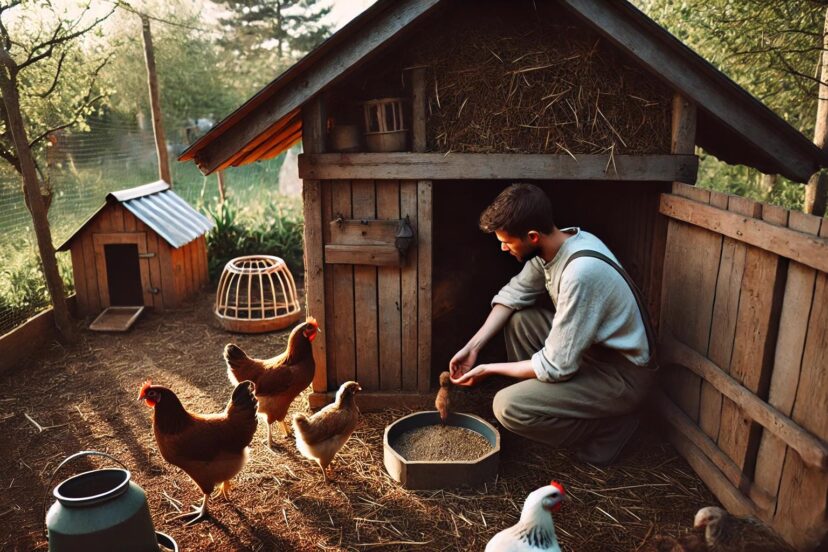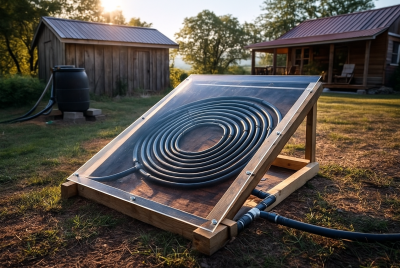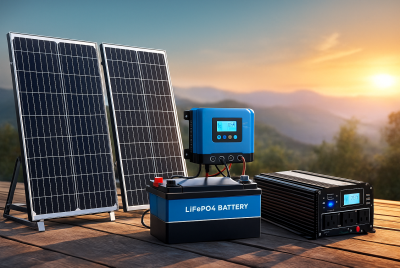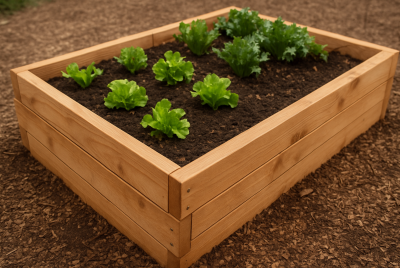Popular Homesteading Techniques: A Guide to Self-Sufficient Living
We may earn a commission for purchases made using our links. Please see our disclosure to learn more.
Do you want to step back from a hectic life and appreciate simplicity? Homesteading offers a way to cultivate, create, and live off what nature has provided (and what you’ve grown with your own hands). The journey begins with a tiny plot of land, perhaps a few pots in a backyard, growing in skills and self-sufficiency. To help you’re journey easier, we’ve listed down some of the popular homesteading techniques, one step at a time. Let’s get started!
Understanding the Basics of Homesteading
There’s more to the meaning of homesteading than just a plot of crops or a few hens… It’s really about creating a sustainable life and thriving on your own. I don’t mean that you need to own big chunks of land just to become a homesteader. Well, you can start from what space you have (like a backyard) and then cultivate it. Make your space productive by growing crops, and animals (chicken or hogs), and using the waste from your kitchen for another purpose. It’s like making your own mini ecosystem and living a humble lifestyle.
Starting with Gardening
Alright, let’s start with gardening. It’s one of the most popular homesteading techniques. Gardening is like your ticket to homesteading. Of course, you don’t need vast fields just to grow your own food. A small backyard or even a windowsill is enough to start. Try your hand at tomatoes, crisp lettuce, or hardy carrots; let them be your first lessons in patience, care, and reward. If you’re not blessed with a green thumb, don’t sweat it! Try hydroponics, it can work out for you.
Choosing the Right Plants for Your Climate
Ah, the plant rookie mistake: planting before researching. Many fall into this trap! Each climate has its quirks and nuances, and choosing the right crops can mean the difference between a flourishing garden and a patch that struggles. If you want to save yourself from devastation after seeing them wither, you need to understand which is which. Learn your local growing season and plant accordingly—you’ll thank yourself later.
Traditional Knowledge and Climate Resilience in Homesteading
Homesteading encompasses a variety of practices aimed at self-sufficiency and sustainable living. Several scientific studies and comprehensive reviews have explored these practices, providing valuable insights into their effectiveness and benefits. Integrating traditional knowledge into modern popular homesteading techniques can significantly enhance sustainability and resilience. Studies show that many indigenous practices—from soil conservation to water management—align well with homesteading’s self-sufficient goals, making them valuable resources in today’s context. As climate change increasingly impacts agriculture, these time-tested methods offer adaptable, resilient solutions for modern homesteaders. These studies and reviews provide a scientific foundation for various homesteading techniques, offering evidence-based insights into their benefits and challenges.
Companion Planting for Better Harvests
Did you know that plants have besties too??? Yup, you heard it right. Certain plants help each other thrive (also called companion planting) and take gardening to the next level. Let me give you an example… Basil and tomatoes are like the best buddies because they enhance each other’s growth. If you do companion planting, you’ll create a natural support system in your garden and will have better yields! Oh, corn, beans, and squash are also a great combination. They’re the three sisters of gardening!
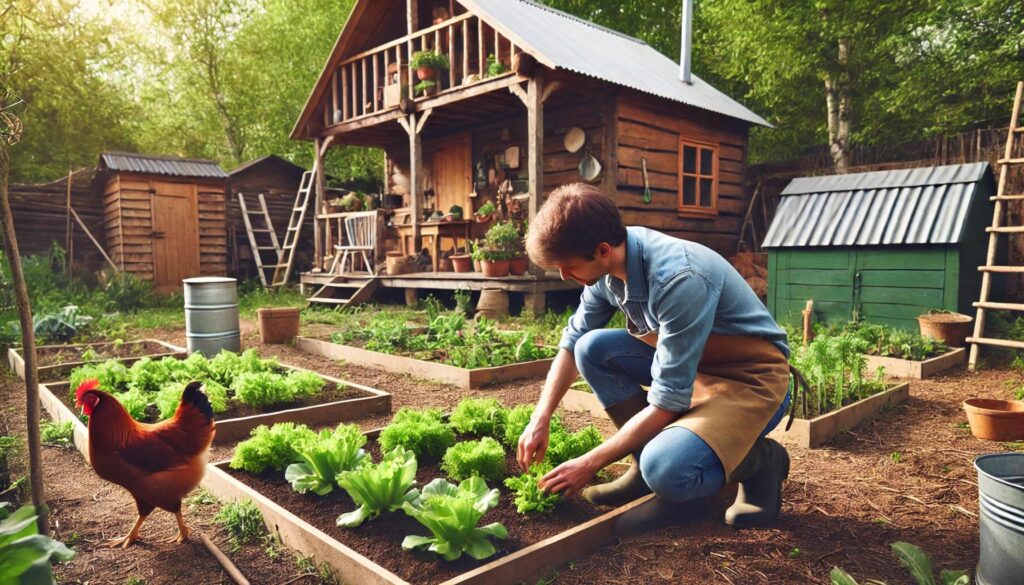
Soil Health: The Foundation of Your Garden
Soil can appear to your eyes as merely dirt but it’s rich in essential nutrients your plants need. Rich, healthy soil is the heartbeat of any thriving garden. A simple soil test will tell you what nutrients it’s missing. Plus, with the addition of compost or organic fertilizers, your garden will sing. Healthy soil doesn’t just support plants—it’s the foundation of your entire homesteading ecosystem.
Composting: Turning Waste into Gold
Another thing I like about the popular homesteading techniques is composting. Homesteading means sustainability that’s why composting is a must! It’s practically the alchemy for the homesteader. Imagine turning what many people think are wastes into “black gold” like leftover peel, coffee grounds, and eggshells. These wastes can become rich compost that nourishes your plants and closes the loop on waste. Start with a compost bin or even just a pile in your yard, and watch as your scraps transform into the lifeblood of your garden. No to waste!!!
Preserving Your Harvest
When your garden starts overflowing with ripe, juicy tomatoes or crisp cucumbers, preservation techniques become a lifesaver. Do you plan on eating it all by yourself before it rots? Of course not. So, preservation is key to making it last and enjoying it a little bit longer. Canning, freezing, and drying allow you to savor the taste of summer all year long. This skill is both practical and nostalgic, linking you to generations past who relied on these same methods for survival through winter.
Essential Products for Homesteading Success
- Raised Garden Bed Kits
These durable raised bed kits make it easy to start gardening anywhere. They provide good soil drainage and warmth, which is ideal for growing healthy vegetables and flowers. - Quality Compost Bin
A compost bin is essential for creating nutrient-rich soil from kitchen scraps. Choose a sturdy, ventilated model that speeds up decomposition and keeps pests away. - Companion Planting Guide
A simple guidebook on companion planting helps you pair vegetables and herbs for healthier gardens. This is a valuable tool for maximizing yields and minimizing pest issues. - Soil Test Kit
Knowing your soil’s pH and nutrient levels helps you plan for successful planting. This easy-to-use kit gives accurate results so you can adjust soil conditions as needed. - Rainwater Collection Barrel
Harvest rainwater with this easy-to-install rain barrel, reducing your reliance on municipal water. It’s a sustainable choice that’s perfect for watering your garden. - Chicken Coop Kit
A chicken coop kit provides a safe, comfortable home for your backyard chickens. It’s typically easy to assemble and includes features like nesting boxes and roosting bars. - Beehive Starter Kit
A beginner-friendly beehive kit allows you to start beekeeping right in your backyard. It’s designed for easy access and safe honey collection, making it perfect for new beekeepers. - Small Livestock Pen
For those keeping small animals like rabbits or goats, a quality pen offers security and comfort. Look for one with a weatherproof roof and sturdy fencing.
Raising Backyard Chickens
Imagine gathering fresh eggs each morning from your own chickens—these delightful, busy little creatures bring an entirely new rhythm to homesteading. Chickens aren’t just egg-layers; they’re pest controllers and composters, turning kitchen scraps into nutrient-rich manure that feeds your garden. A small flock can be a joyful addition, both functional and, well, just plain fun. And hearing a cock-a-doodle-doo in the morning feels like a wake-up call!
Building a Chicken Coop
Every chicken (and animal in general) deserves a coop (or a shelter), a safe haven to lay eggs, sleep, and stay safe from predators. It doesn’t need to be huge; a simple, well-ventilated structure with nesting boxes is more than enough. A coop not only shelters your chickens but adds another layer of self-sufficiency to your homestead.
Beekeeping for Sweet Rewards
If you’re ready to level up your homesteading game, explore beekeeping techniques. Bees add magic to any homestead, pollinating plants and producing golden honey. Though beekeeping takes some study and a dose of courage (you need to be brave if you wanna face them all), the rewards are worth it. Imagine harvesting fresh, sweet honey from your backyard. Isn’t that lovely? A hive offers honey, wax, and the joy of observing these industrious little creatures at work. Each bee has a role, and together they create something as sweet as it is vital. Just make sure you’re up for it tho!
Getting Started with Small Livestock
Ready to expand your own ecosystem beyond chickens? Cool! Small livestock like rabbits and goats are worth considering. Rabbits are easy to raise, and their manure is garden gold. Goats offer milk and can be delightful weed-eaters, helping you clear overgrown areas naturally. Small livestock adds diversity and resilience to your homestead. Try to raise Rabbits at first if you aren’t sure about goats just yet.
Rainwater Harvesting for Sustainable Water Use
Water scarcity is real (especially for living off-grid), and rainwater harvesting offers an elegant solution. With a few barrels under your gutters, you can capture rain and store it for watering plants. It’s a simple, affordable way to make your homestead even more self-reliant, one rain shower at a time.
Building Raised Garden Beds
Raised garden beds simplify gardening by keeping weeds at bay, improving drainage, and warming the soil more quickly in spring. They’re also easier on the back, saving you from crouching down for hours on end. Consider them a small but mighty upgrade to your garden space.
Practicing Permaculture Principles
Permaculture is a way of homesteading that leans into nature’s own design. It’s about observing natural patterns and weaving them into your homestead’s layout. Imagine a space where every plant and animal has a purpose, working in harmony like an orchestra. Permaculture brings intention and thoughtfulness into every part of your land.
DIY Natural Cleaners and Personal Care Products
Sustainability doesn’t stop at the garden’s edge; making natural cleaners and personal care items is a homesteading hallmark and popular homesteading techniques. Using simple ingredients like vinegar and baking soda, you can whip up effective, chemical-free cleaners. With a bit of creativity, you’ll soon have a home that’s both clean and green.
Herbal Medicine: A Natural Homesteading Skill
Growing herbs can be like crafting your own medicine cabinet. Chamomile, peppermint, lavender—these simple plants can be brewed into teas or made into salves, offering gentle relief for common ailments. It’s another step toward a home that nurtures health from the inside out.
Growing Fruit Trees
Ah, fruit planting… a challenging yet rewarding journey! Planting a fruit tree is a gift to your future self and descendants. Apples, pears, and peaches take time to mature, but once they do? Oh boy, you’ll have fresh fruit right at your fingertips. Trees add beauty, shade, and a harvest that only deepens with time. Consider planting trees if you have a wider space for homesteading.
Sustainable Energy Options
For many homesteaders, sustainable energy is a natural next step. Solar panels, wind turbines, or even a small hydropower system can reduce dependence on the grid. This is often an investment upfront, but it pays off in the long run, leaving a lighter footprint on the earth.
Foraging for Wild Edibles
Foraging connects you to the land in a way few other activities can. With guidance and caution, you can discover edible plants, mushrooms, and even herbs growing in the wild. This practice comes with a sense of adventure—finding dinner in unexpected places. But if you’re not sure about something, it’s wise to do some research before diving in.
Cooking and Baking from Scratch
Cooking from scratch transforms meals into homestead experiences. Baking bread, making yogurt, or crafting a meal from your own garden harvest brings you closer to the food you eat. Not to mention, the taste of homemade? Pure bliss. Sure, it will require time and effort but you’ll love it!
Building and DIY Projects
Last on our list of popular homesteading techniques is DIY. Homesteading often calls for a touch of carpentry or DIY skills. From building a shed to crafting a simple garden bench, these projects add value to your homestead while saving costs. You don’t need to be an expert; the beauty of DIY lies in learning and improving along the way. Have the right tools for the job and a little research, then you are good to go!
Summary
Homesteading is more than a set of skills; it’s a shift in how we live and connect with the world around us. From growing food and keeping animals to creating a space of your own, homesteading is a journey in self-sufficiency and balance. Take your time, savor each project, and remember: that perfection is overrated. Follow these popular homesteading techniques and build your own haven!
FAQs
1. What is homesteading?
Homesteading is a lifestyle focused on self-sufficiency and sustainability. This involves growing your own food, raising animals, and crafting.
2. Can I homestead on a small plot of land?
Absolutely! A small backyard or a few containers on a balcony can be transformed into a productive space.
3. Do I need to live off-grid to be a homesteader?
Not really. Anyone can incorporate homesteading principles into their lifestyle, adapting them to fit their needs and environment.
4. Is homesteading expensive to start?
Not if you start small! Start with a simple garden or a few DIY cleaning products. Over time, as you become more self-sufficient, you may find that you’re saving money by producing your own food and goods.
5. How do I start homesteading if I’m a beginner?
Start a small garden, try composting, or learn to bake bread from scratch. Homesteading is a journey, and each small step builds your skills and confidence.

